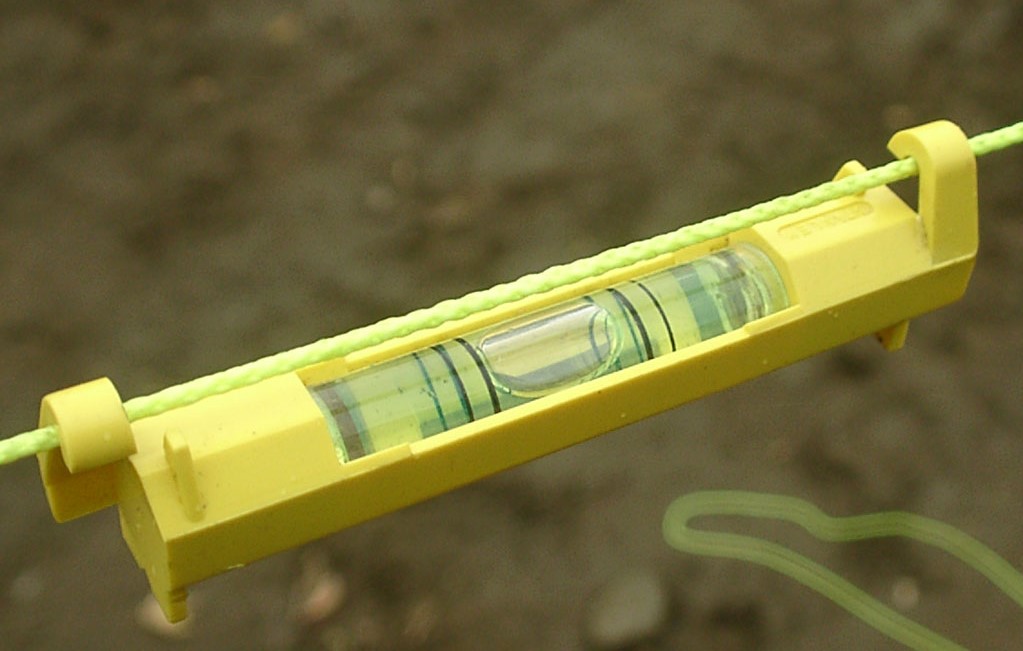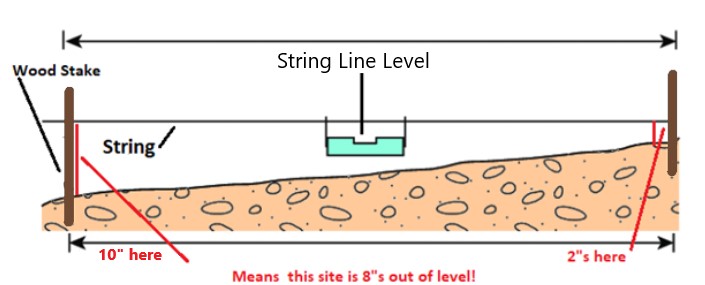How to Use a String Line Level
Setting the grade on a building site typically requires a survey instrument, but setting elevations is possible with only a string line level.
Supplies Needed:
● Good-quality string
● Wood stakes
● Hammer
● Line bubble level (only costs a few dollars)
● Tape measure

Steps for Using a String Line Level to Check Grade
1. Tie one end of the string to a wooden stake. Using the hammer, drive the wooden stake into the ground at the highest point of the grade (highest final elevation). Many times, the starting point is near a building corner since the water would need to flow downhill from there.
2. Measure out a length of string with the tape measure. Usually a length of 50 or
100 feet is desired, making the calculations easier.
3. Attach the bubble level to the middle of the length of string. Tie the other end of the string to a second wooden stake.
4. Tie the string so you are able to slide it up and down on the wooden stake. Pull the sting line tight, and drive the stake into the ground in the direction you want the water to flow. There should not be any sag in the line.
5. Slide the string knot on the downslope stake up or down to get the bubble level perfectly level.
6. Use the tape measure to find out the difference between the ground and the string along the length of the run. Take measurements at least every 10 feet. Calculate the overall slope of the ground by taking the difference between the string and the ground near the second stake and the string and ground near the first stake. Divide this difference by the distance between the two measured points. The direction of water will flow towards the stake with the greater measurement. For example, say the measured points are 50 feet apart. The first ground to string difference is 1.20 feet and the difference at the second stake is 1.66 feet. The difference along the run is 0.46 feet. The grade is equal to 0.46/50 =.0092. Multiply by 100 to get a percent grade. The result of the example is a ground slope of .92 percent.
7. Move the stakes around and repeat the process of leveling the string line each time a section of grade needs checked. The first stake can be left in place and the second down slope stake moved to check for drainage at the corners of buildings.
8.

Tips for Line Levels
● A longer piece of string allows checking ground slopes for a larger area but is more difficult to avoid a sag in the middle of the line. Any sag in the line will result in an error in the grade checks.
● A laser line with a built-in bubble level is a faster way to perform this process of checking ground slopes. A strong laser easily produces a light beam for more than 100 feet. Set the laser on a stand or bucket and level. Then measure out 100’ and find the laser beam. Using the laser, the beam of light takes the place of
the string line.







